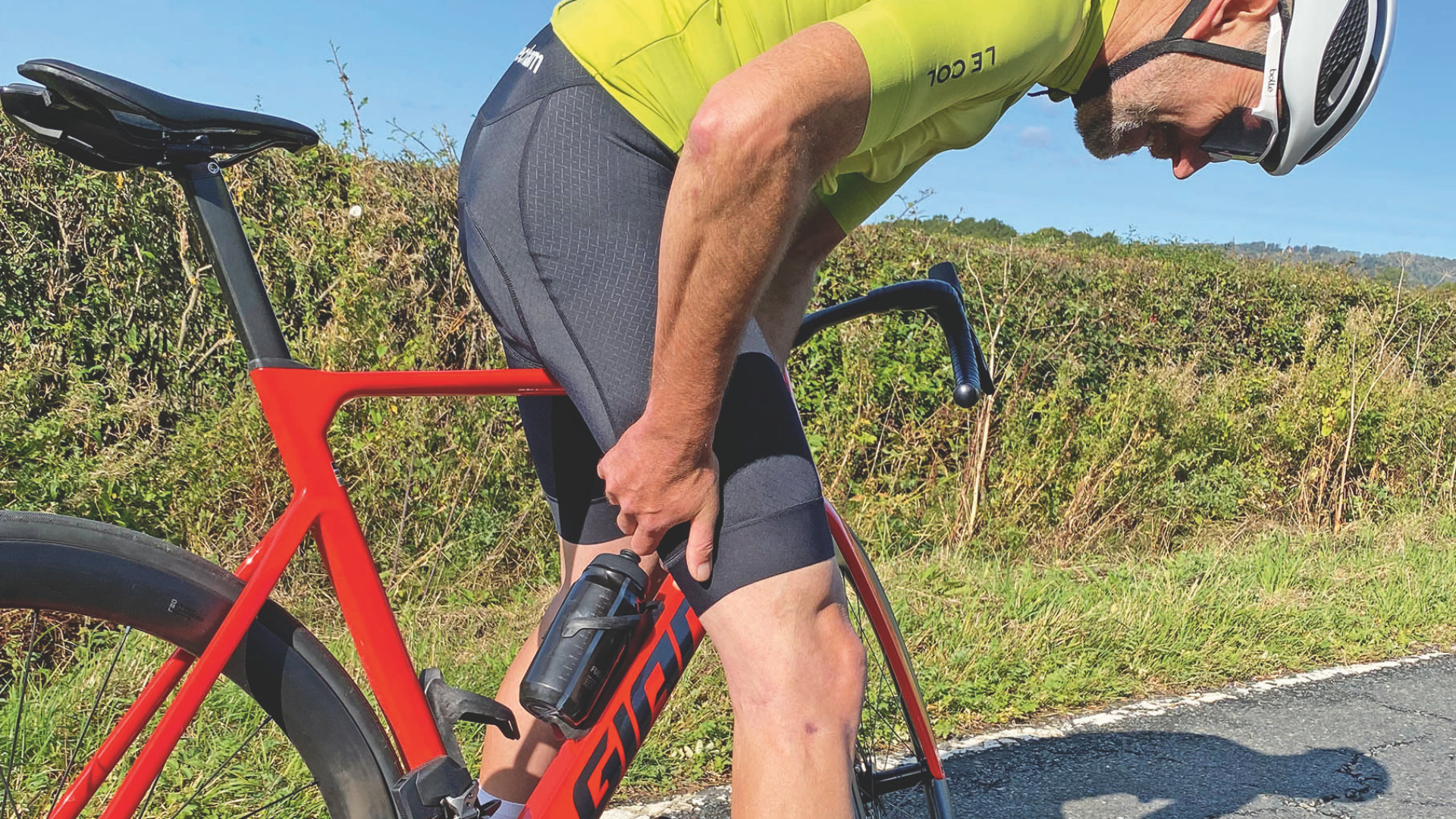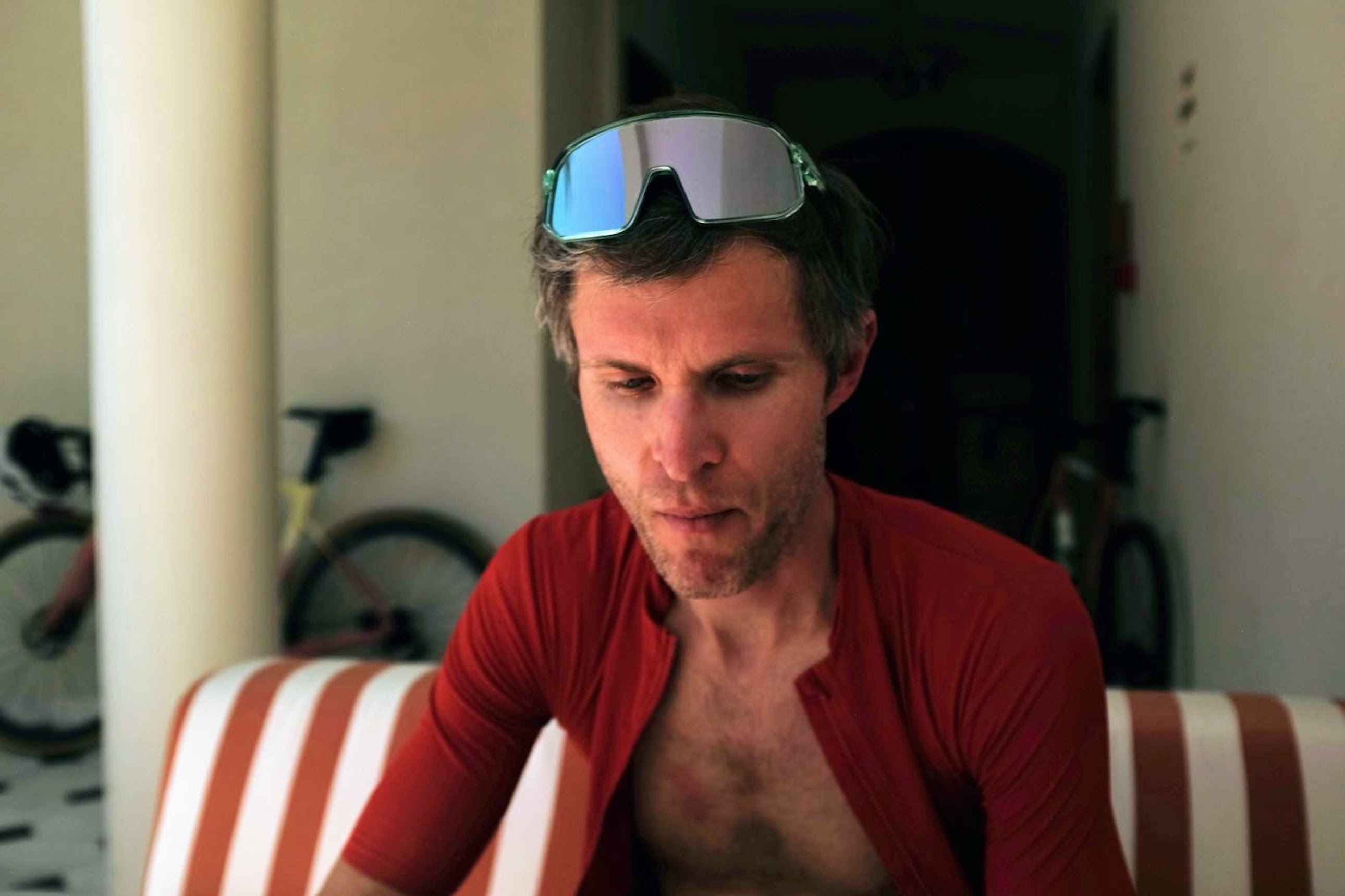Cramp while cycling? Solve seizing muscles with this 15-point checklist from a health and performance professor
Dr Kevin Miller, cramp expert at Texas State University, has the latest advice on how to avoid that agonising tightening feeling


There are certain nagging questions in cycling that have a tendency to generate conflicting opinions and a confusing array of different views. In this ASK THE EXPERT series from Cycling Weekly’s print edition, we seek to clear up confusion by seeking out the experts best qualified to provide, if not the final word, then at least authoritative advice supported by verified expertise.
Dr Kevin Miller, a professor in the department of health and human performance at Texas State University, studies exercise-associated muscle cramping. In this feature he answers our questions about what cramp is, why it happens and what the latest research says about how to combat it.
What exactly is the muscle cramp that affect cyclists?
The phenomenon that I study is exercise-associated muscle cramping, AKA exertional or work-related cramping – as distinct from nighttime or pregnancy cramping, etc. It is defined as an involuntary painful contraction of skeletal muscle occurring during or after exercise. Most frequently it affects the working muscles – in runners and cyclists, the calves, quads and hamstrings.
Why does it hurt so much?
Great question, and I’m not sure we truly know. Presumably it’s because of the constant actin-myosin [muscle filament] interaction squeezing the nerve terminals, not allowing the normal passage of the contractile proteins.
In cyclists, why is it usually the hamstrings that cramp?
The latest race content, interviews, features, reviews and expert buying guides, direct to your inbox!
The most cramp-prone muscle groups are those that cross two joints, meaning they have to both shorten and lengthen during exercise. This double demand predisposes a muscle to cramping.
Cramp seems most common in the latter stages or long rides/races – is it caused by fatigue?
Unfortunately, it’s more complicated than that. I published a paper last year proposing a new theory on why cramps occur during exercise, which I called ‘the multifactorial theory’ – or the kitchen sink hypothesis! Essentially, you can have 100 different recipes for cramping. In 1997 Martin Schwellnus proposed that cramping during exercise was a result of fatigue-induced changes in the nervous system, which was revolutionary. Before then, everybody just presumed that the cause was dehydration or electrolyte imbalance. But the fatigue theory is not perfect, either. If fatigue were the sole cause, we’d see the least cramping among the most highly trained, fatigue-resistant athletes, and that isn’t the case. Instead, rather than a singular cause, we suspect that multiple factors in combination change what’s happening in the central nervous system, creating over-excitation to a muscle, eventually causing cramp.
Certain people seem particularly prone to cramping – can we infer a genetic predisposition?
Yes, the literature suggests the cramping predisposition is passed down through the paternal side. The best predictor of who’s going to cramp is simply asking them, have you ever cramped before? On the flip-side, a few genetically blessed people are predisposed never to cramp.
How best to develop resistance to cramping?
I’m an athletic trainer as well as a researcher, and I have to remind athletes that muscle cramping during exercise is not a normal situation, that it’s an injury to the body – and should be evaluated accordingly. You’ve got to do your homework. I provide a questionnaire (see box) that can help people to identify the circumstances and trends associated with their cramping.
Cramp checklist
Suffering from recurrent cramp on the bike? Each time it happens, go through these 15 questions to figure out your personal cramp ‘recipe’
1. Do you have any illnesses, allergies, or medical conditions? It may have made cramp more likely.
2. Did cramp occur after a change or start of medication or drug use? Could it be a side effect?
3. Do you regularly cramp during exercise? Genetic predisposition?
4. How intensely and long were you exercising before you developed the cramp? Is fatigue a factor?
5. When did the cramp occur during exercise? If it was near the end, fatigue is likely a contributing factor.
6. How much sleep did you get the night before the exercise session? Sleep loss reduces muscle glycogen and time to exhaustion.
7. How hot and humid was it? Dehydration or lack of acclimatisation may be a factor.
8. Was the exercise session novel in any way? Overexertion?
9. What was your diet like in the days preceding? Poor fuelling?
10. Did you consume supplements or stimulants? An over-stimulated your nervous system?
11. Were you recently injured? Again, the nervous system may be affected.
12. What was your psychological state? Stress or unrealistic expectations may increase nervous system excitability.
13. Did you consume enough fluids/electrolytes to replace your sweat losses? Dehydration may be a factor.
14. Did the cramp occur only in the muscles doing the most work? Perhaps you are working certain muscles too hard.
15. Did the cramp occur during training or during competition? If the latter, the added stress/workload may be a causal factor.
Does stretching help to prevent cramp?
Static stretching is unlikely to help. We’ve investigated different types of stretching and none of them affect the neurological system significantly enough to prevent cramping. Then again, from a treatment standpoint, static stretching is the best thing you can do for somebody who’s cramping – stretching out a cramped muscle relieves the symptoms very, very quickly. Therein lies some clues to the aetiology: if dehydration were the cause, stretching shouldn’t work.
Is dehydration or electrolyte imbalance still considered a contributory factor?
Though the term ‘electrolyte imbalance’ is thrown around a lot, nobody’s ever defined what it means. But we can study sodium losses. In 2021, my group published the largest prospective cohort study in athletes across various sports, looking at sweat losses and sodium concentrations in the sweat to assess varying susceptibilities. In 10 out of the 11 sports studied, I could not tell if the test subject had a history of cramping based on their sweat sample. The one exception was American football. Sweat and sodium losses are not a strongly predictive factor.
Does this mean that sweat testing is pointless in terms of preventing cramping?
Well, it’s unlikely to predict susceptibility, but from the perspective of how to rehydrate safely and completely, a sweat test can offer some benefits. It can tell you exactly how much fluid you’re losing, to help calculate rehydration. The simpler method is to weigh yourself before and after exercise – almost all of that body weight loss will be sweat. Divide by the amount of time you exercised and now you have your sweat rate. Just be sure not to over-hydrate, which can be deadly.
What about electrolyte supplements, are they necessary?
In the average UK or US diet, which includes lots of processed foods, we’re getting plenty of salt. It’s almost never a problem. But if someone has a really high sweat rate with high sodium concentration, they may benefit from some guidance on how much sodium to include in their diet, as they may need a little more to help retain the fluid that they’re drinking.
Any scientific breakthroughs in the pipeline to defeat cramp?
There was a recent case study that looked at nutritional factors – an evolving area that needs further exploration. Another recent paper suggested adding plyometrics or more strength training to prevent cramping. Simply making sure you do enough training at race intensity can help too.

David Bradford is senior editor of Cycling Weekly's print edition, and has been writing and editing professionally for 20 years. His work has appeared in national newspapers and magazines including the Independent, the Guardian, the Times, the Irish Times, Vice.com and Runner’s World. Alongside his love of cycling, David is a long-distance runner with a marathon personal best of 2hr 28min. Diagnosed with retinitis pigmentosa (RP) in 2006, he also writes personal essays exploring sight loss, place, nature and social history. His essay 'Undertow' was published in the anthology Going to Ground (Little Toller, 2024). Follow on Bluesky: dbfreelance.co.uk